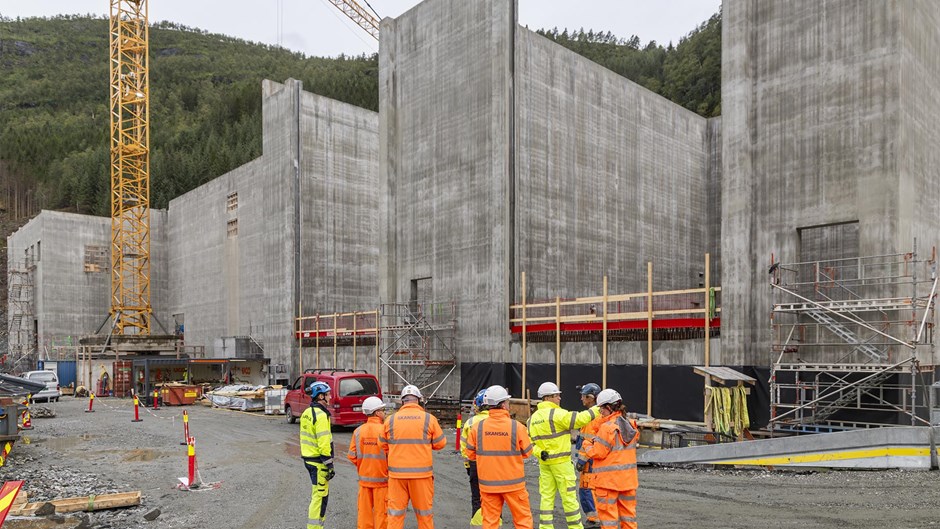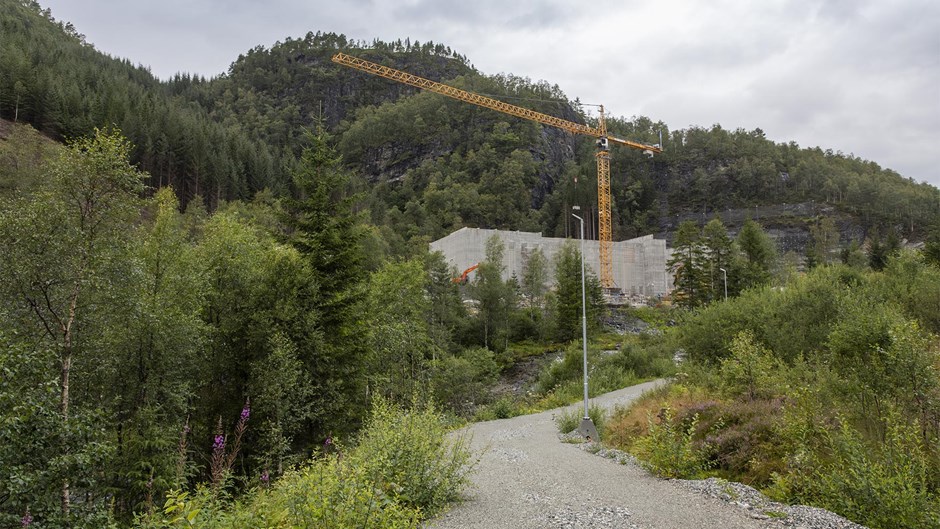As the UK gears up for growth in developing new sources of renewable energy, the construction industry has a key role to play in delivering major civil engineering and building projects. This includes the creation of new electricity substations and High Voltage Direct Current (HVDC) converter stations on time, every time.
In preparation, we’re collaborating with our team in Norway where we’re working for customer Aker BP on the Yggdrasil oil and gas project near Bergen.
Yggdrasil is the largest ongoing development on the Norwegian continental shelf, and, through it, Aker BP is opening up a mature area in the North Sea, where extensive new infrastructure is planned.
Yggdrasil is being developed with High Voltage Alternating Current (HVAC) power supply from shore, and this is where Skanska's scope of work lies. The starting point for the new shore-based power plant for Yggdrasil is Statnett's 420 kV substation in Børdalen in Samnanger.
In Børdalen, Skanska is constructing a new transformer station and underground cabling. In addition, Skanska is building a compensation station at the Årskog commercial area in Fitjar municipality.
The fjord and subsea cable, from Samnanger via Årskog to Hugin A and Munin in the North Sea will be 255km long. This element of the work is being led by a separate specialist contractor.
Early contractor involvement
When Skanska Norway was appointed, a key priority for customer Aker BP was to bring in our competence and experience from comparable projects and onshore civil construction to help optimise buildability and programme delivery.
The team started with a six-month early contractor involvement phase, with Aker BP, the original equipment manufacturer (OEM) Hitachi Energy, designer Multiconsult and Skanska co-located in Oslo. It provided the first opportunity to holistically review the design and construction programme.
Through using a range of construction techniques, deploying 4D planning for high-risk activities and finding ways to integrate the OEM and Skanska, the integrated team has been able to reduce the programme timescale by several months.
Managing high-risk activities
From a scheduling perspective, the delivery package consisting of heating, ventilation and air conditioning (HVAC), low-voltage electrical and automation was identified early-on as a critical component in the project’s timeline. Keeping this on track is crucial to completing the project to the agreed date.
We took an innovative approach, initially inviting four potential suppliers to scope the work. This was narrowed down to two, with one partner appointed following a six-month early contractor involvement phase.
This approach enabled all parties to build trust and significantly reduce risk through working together, with access to the same information and to a common goal that was best for the project.
Bringing insights to the UK
We’re working closely with our experts in Norway, so we can bring all of this knowledge and experience to the UK. It will help us to support our customers with delivering schemes on time, on budget and to high quality standards – helping to ensure a smooth handover and route to energisation.

